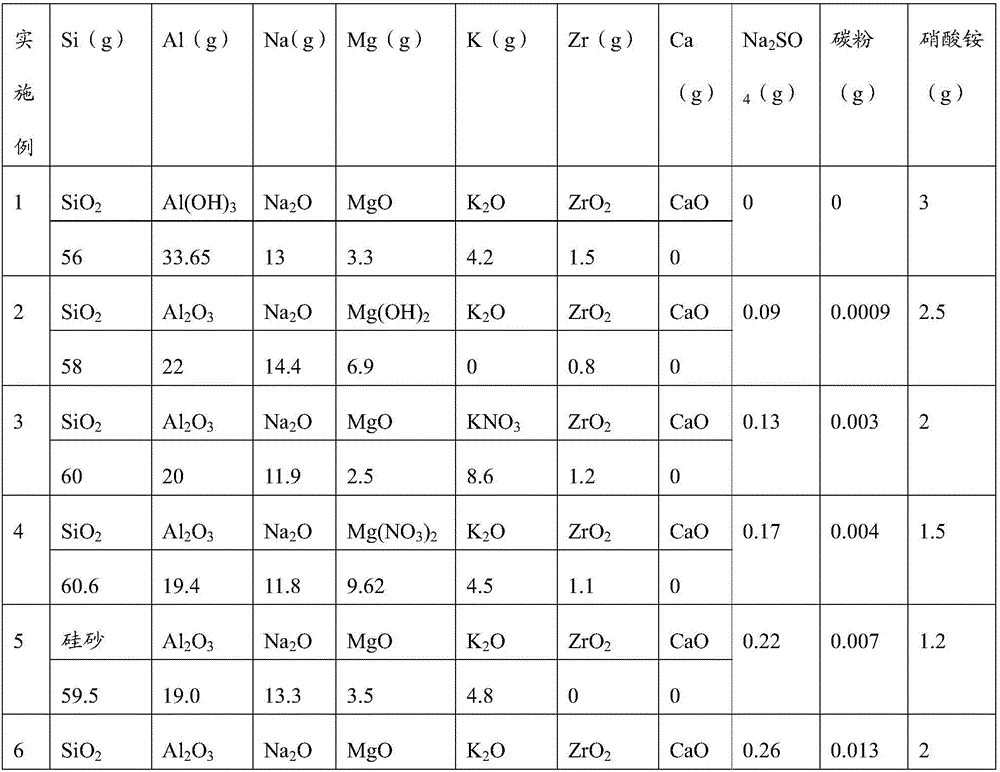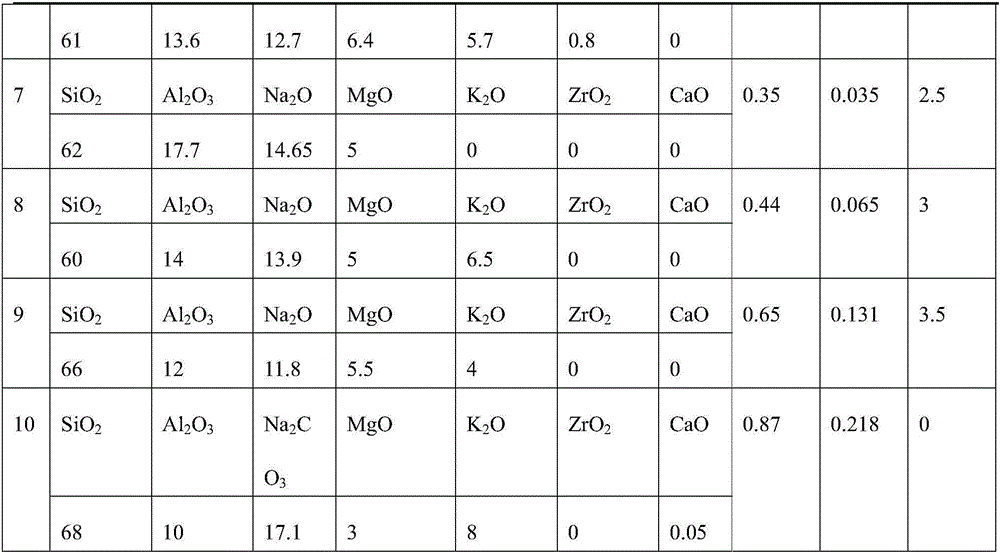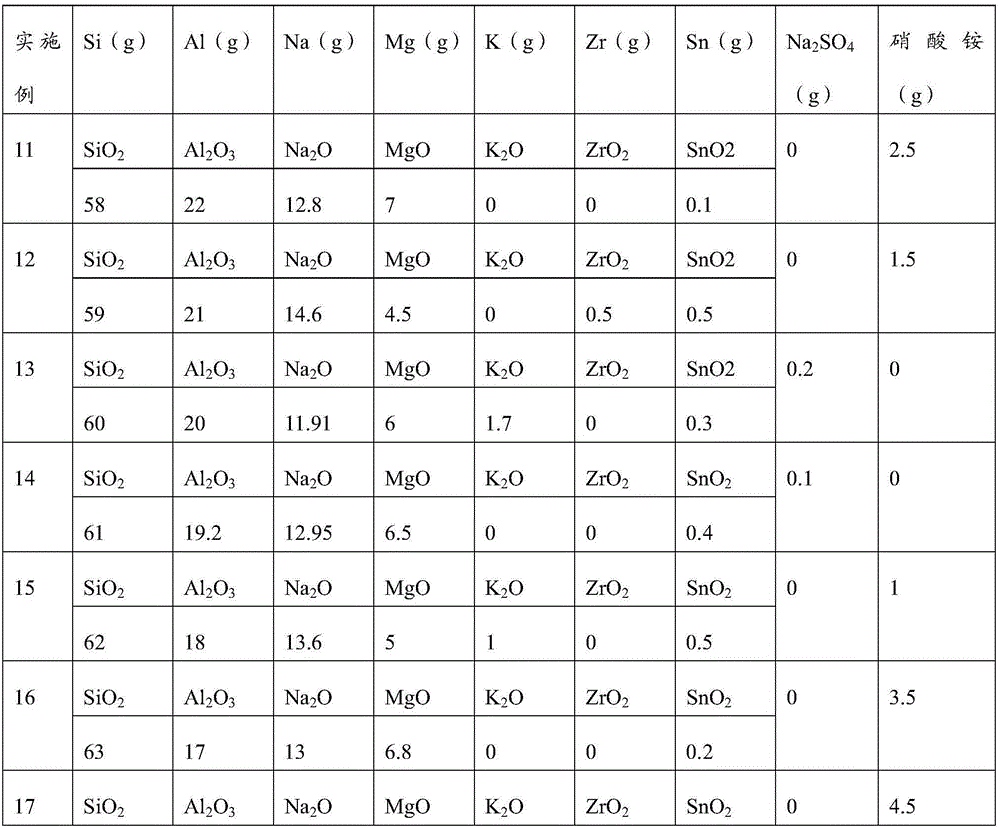Aluminosilicate glass, and preparation method and application thereof
A technology of aluminosilicate glass and glass plates, which is applied in optics, instruments, nonlinear optics, etc., and can solve the problems of reduced strength, failure of the glass cover to achieve the original goal of protecting the display device, and broken glass cover, etc.
- Summary
- Abstract
- Description
- Claims
- Application Information
AI Technical Summary
Problems solved by technology
Method used
Image
Examples
preparation example Construction
[0048] The above-mentioned preparation method of aluminosilicate glass greatly reduces or controls the introduction of coloring elements Fe and S by adjusting the composition of raw materials, added clarifiers and heating methods, so that the glass is colored amber or sulfur or brown-yellow or colored Factor (FeS x ) content is reduced, so that the visible light transmittance of the glass is high, the glass color index is basically close to neutral color, and the visible light transmittance is high.
[0049] A strengthened glass according to one embodiment is obtained by strengthening the above-mentioned aluminosilicate glass.
[0050] Preferably, it is strengthened by means of chemical strengthening. Since the total mass percentage of alkali metal oxides in the aluminosilicate glass is greater than or equal to 9% and less than or equal to 23%, the content of alkali metal oxides is relatively high, which is convenient for chemical strengthening treatment.
[0051] A glass pl...
Embodiment 1~20
[0056] For the aluminosilicate glasses of Examples 1-10, weigh the corresponding raw materials according to the proportions in Table 1, and for the aluminosilicate glasses of Examples 11-20, weigh the corresponding raw materials according to the proportions in Table 2, and mix thoroughly Finally, put it into a platinum crucible, and carry out melting and clarification for 6 hours under a high-temperature electric furnace at 1620°C. The molten glass is poured into a graphite mold to shape, and kept at 650°C for half an hour, and then cooled to room temperature with the furnace to obtain a glass block. After mechanical cutting, rough grinding, fine grinding, and polishing, it becomes a sheet glass with a thickness of 1.1 mm. The composition of the final glass (including Fe 2 o 3 with SO 3 ) is tested by XRF, and the results are shown in Table 3 and Table 4 in terms of the mass percentage of the oxide standard; the visible light transmittance and glass color chromaticity are t...
PUM
| Property | Measurement | Unit |
|---|---|---|
| thickness | aaaaa | aaaaa |
| transmittivity | aaaaa | aaaaa |
Abstract
Description
Claims
Application Information
 Login to View More
Login to View More - R&D
- Intellectual Property
- Life Sciences
- Materials
- Tech Scout
- Unparalleled Data Quality
- Higher Quality Content
- 60% Fewer Hallucinations
Browse by: Latest US Patents, China's latest patents, Technical Efficacy Thesaurus, Application Domain, Technology Topic, Popular Technical Reports.
© 2025 PatSnap. All rights reserved.Legal|Privacy policy|Modern Slavery Act Transparency Statement|Sitemap|About US| Contact US: help@patsnap.com



